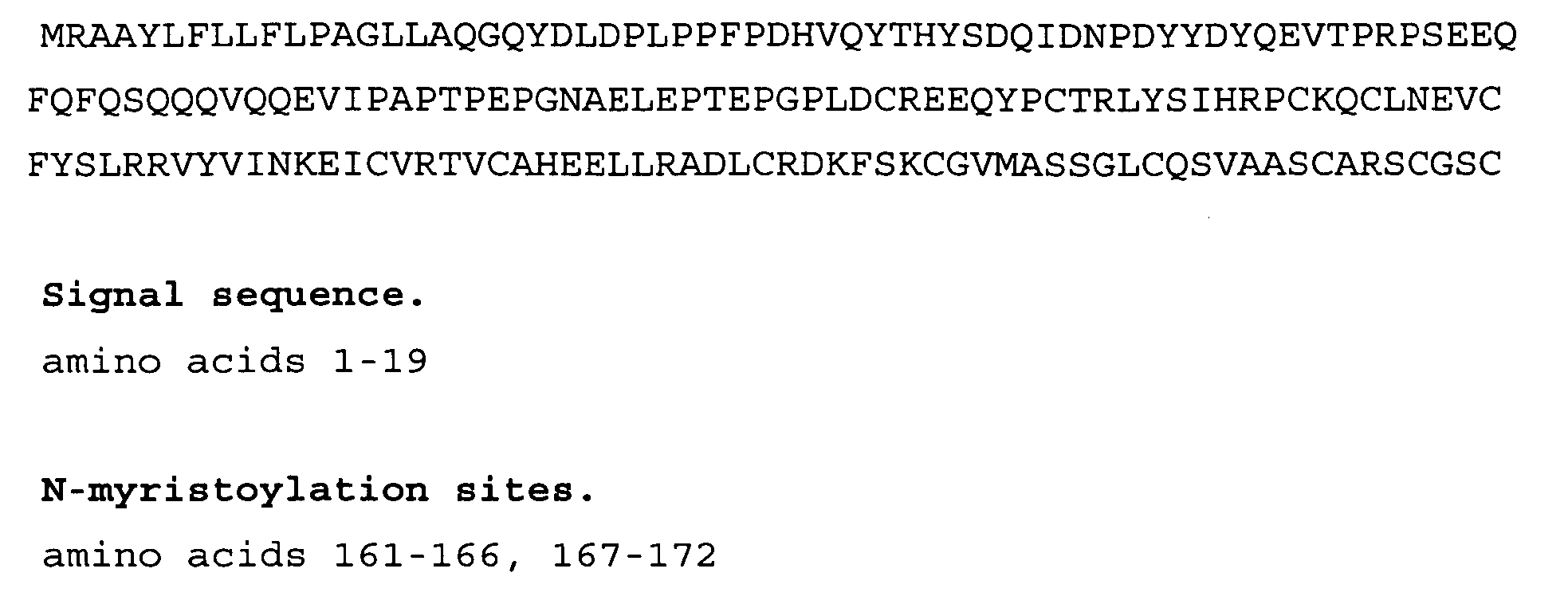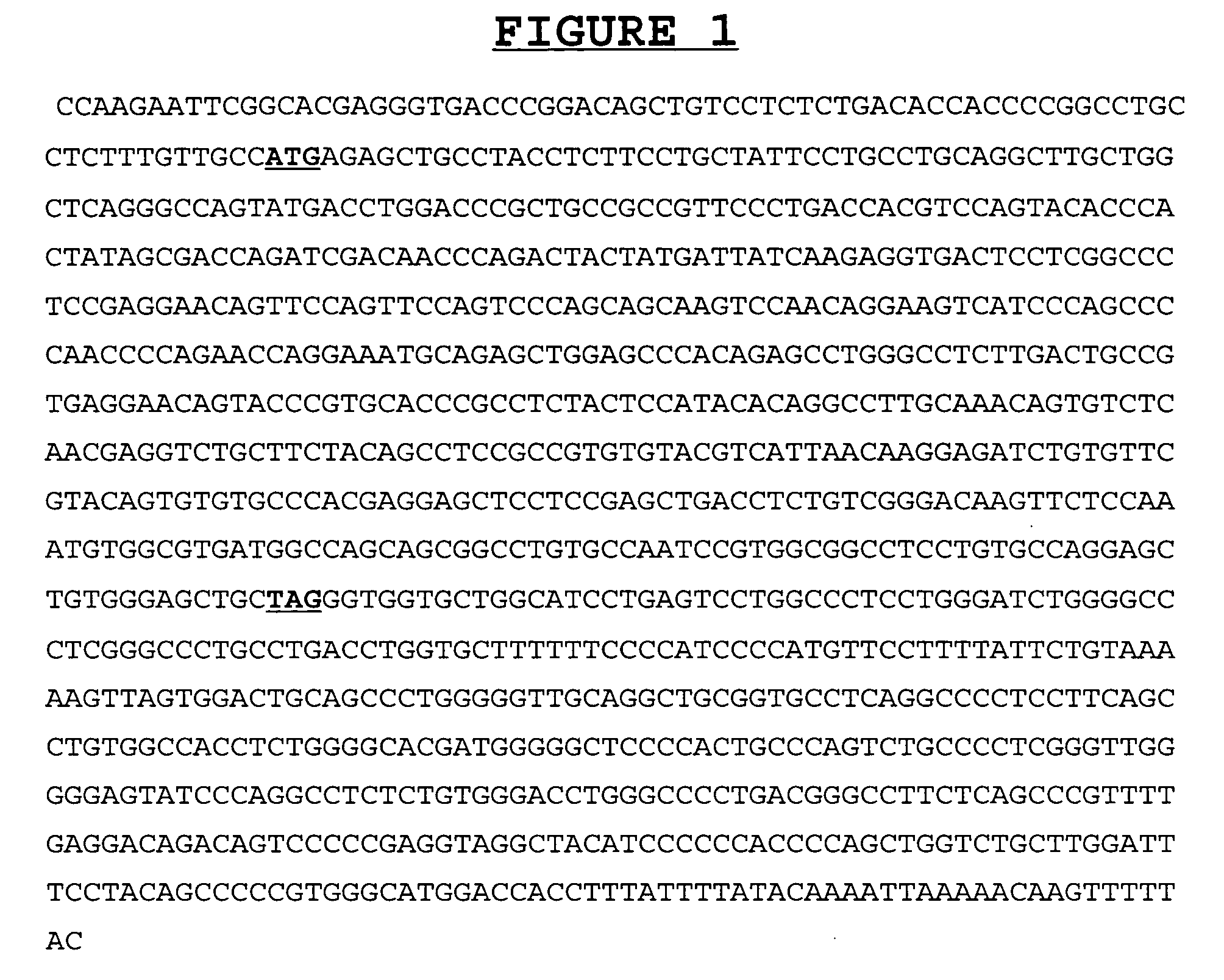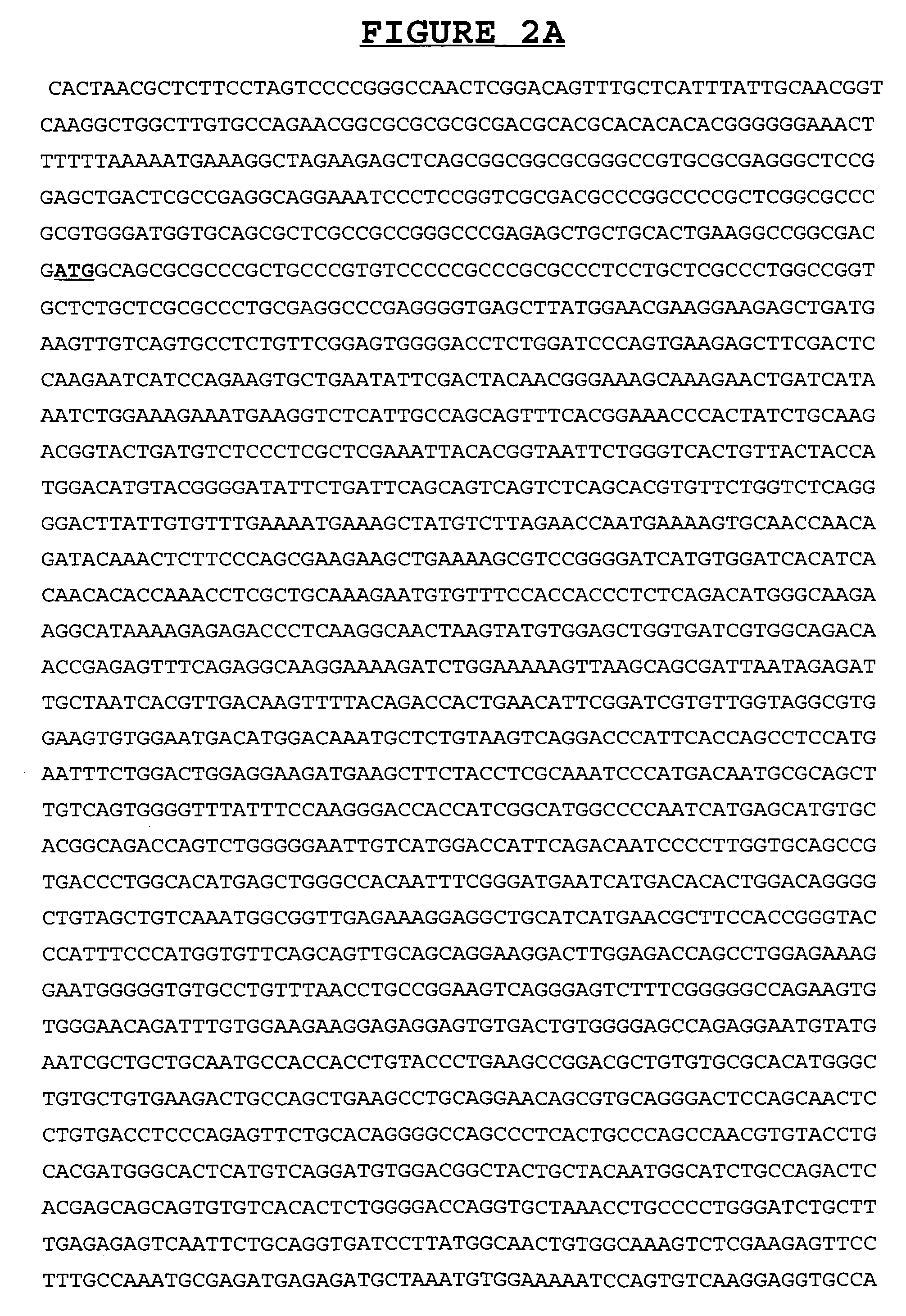Compositions and methods for the diagnosis and treatment of tumor
a tumor and tumor technology, applied in the field of tumor tumor compositions and methods, can solve the problems of many attempts to develop effective methods, slow and laborious mice technology, and inability to modulate gene expression in mammals, and achieve the effect of potentiating or growth-enhancing effect on cancer cells
- Summary
- Abstract
- Description
- Claims
- Application Information
AI Technical Summary
Benefits of technology
Problems solved by technology
Method used
Image
Examples
example 1
Tissue Expression Profiling Using GeneExpress®
[1017] A proprietary database containing gene expression information (GeneExpress®, Gene Logic Inc., Gaithersburg, Md.) was analyzed in an attempt to identify polypeptides (and their encoding nucleic acids) whose expression is significantly upregulated in a particular tumor tissue(s) of interest as compared to other tumor(s) and / or normal tissues. Specifically, analysis of the GeneExpress® database was conducted using either software available through Gene Logic Inc., Gaithersburg, Md., for use with the GeneExpress® database or with proprietary software written and developed at Genentech, Inc. for use with the GeneExpress® database. The rating of positive hits in the analysis is based upon several criteria including, for example, tissue specificity, tumor specificity and expression level in normal essential and / or normal proliferating tissues. The following is a list of molecules whose tissue expression profile as determined from an anal...
example 2
Microarray Analysis to Detect Upregulation of TAT Polypeptides in Cancerous Tumors
[1018] Nucleic acid microarrays, often containing thousands of gene sequences, are useful for identifying differentially expressed genes in diseased tissues as compared to their normal counterparts. Using nucleic acid microarrays, test and control mRNA samples from test and control tissue samples are reverse transcribed and labeled to generate cDNA probes. The cDNA probes are then hybridized to an array of nucleic acids immobilized on a solid support. The array is configured such that the sequence and position of each member of the array is known. For example, a selection of genes known to be expressed in certain disease states may be arrayed on a solid support. Hybridization of a labeled probe with a particular array member indicates that the sample from which the probe was derived expresses that gene. If the hybridization signal of a probe from a test (disease tissue) sample is greater than hybridiz...
example 3
Quantitative Analysis of TAT mRNA Expression
[1022] In this assay, a 5′ nuclease assay (for example, TaqMan®) and real-time quantitative PCR (for example, ABI Prizm 7700 Sequence Detection System® (Perkin Elmer, Applied Biosystems Division, Foster City, Calif.)), were used to find genes that are significantly overexpressed in a cancerous tumor or tumors as compared to other cancerous tumors or normal non-cancerous tissue. The 5′ nuclease assay reaction is a fluorescent PCR-based technique which makes use of the 5′ exonuclease activity of Taq DNA polymerase enzyme to monitor gene expression in real time. Two oligonucleotide primers (whose sequences are based upon the gene or EST sequence of interest) are used to generate an amplicon typical of a PCR reaction. A third oligonucleotide, or probe, is designed to detect nucleotide sequence located between the two PCR primers. The probe is non-extendible by Taq DNA polymerase enzyme, and is labeled with a reporter fluorescent dye and a que...
PUM
| Property | Measurement | Unit |
|---|---|---|
| temperature | aaaaa | aaaaa |
| pH | aaaaa | aaaaa |
| pH | aaaaa | aaaaa |
Abstract
Description
Claims
Application Information
 Login to View More
Login to View More - R&D
- Intellectual Property
- Life Sciences
- Materials
- Tech Scout
- Unparalleled Data Quality
- Higher Quality Content
- 60% Fewer Hallucinations
Browse by: Latest US Patents, China's latest patents, Technical Efficacy Thesaurus, Application Domain, Technology Topic, Popular Technical Reports.
© 2025 PatSnap. All rights reserved.Legal|Privacy policy|Modern Slavery Act Transparency Statement|Sitemap|About US| Contact US: help@patsnap.com



